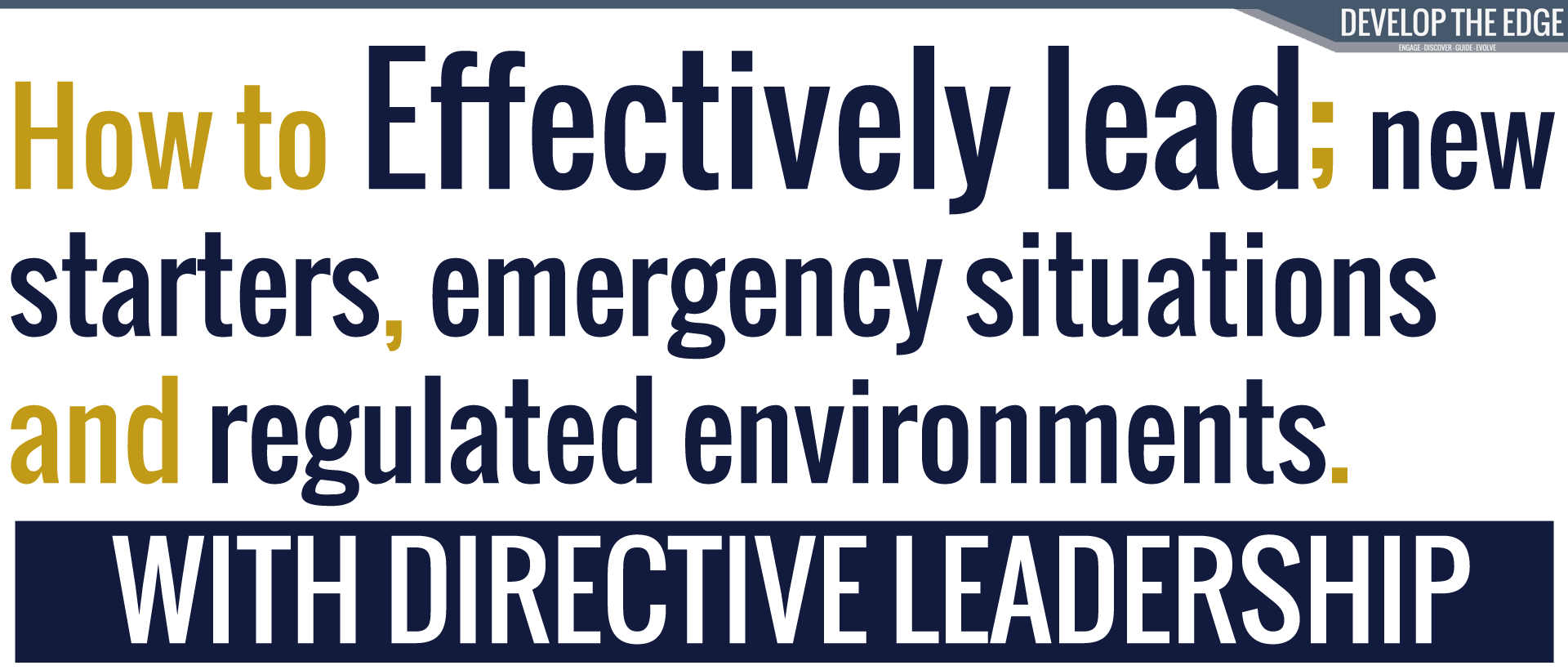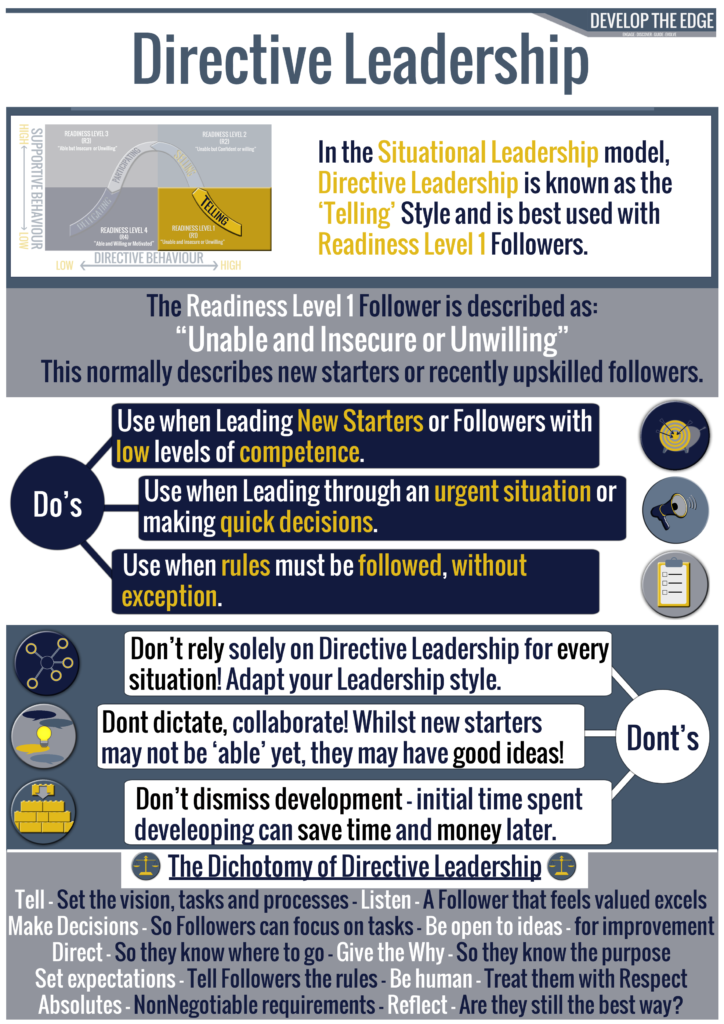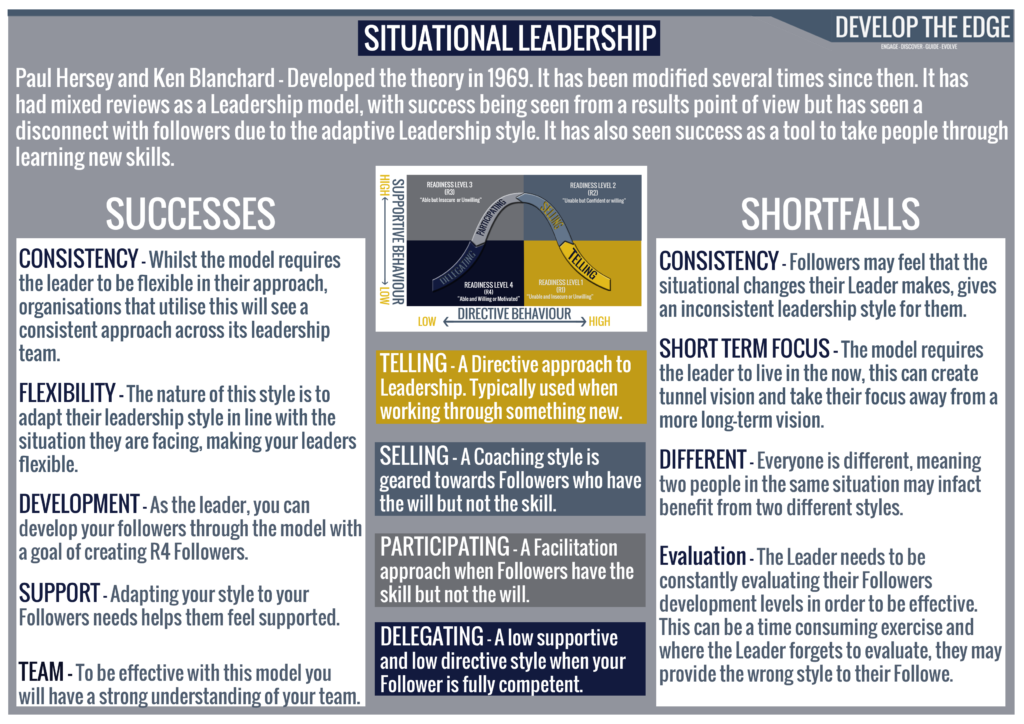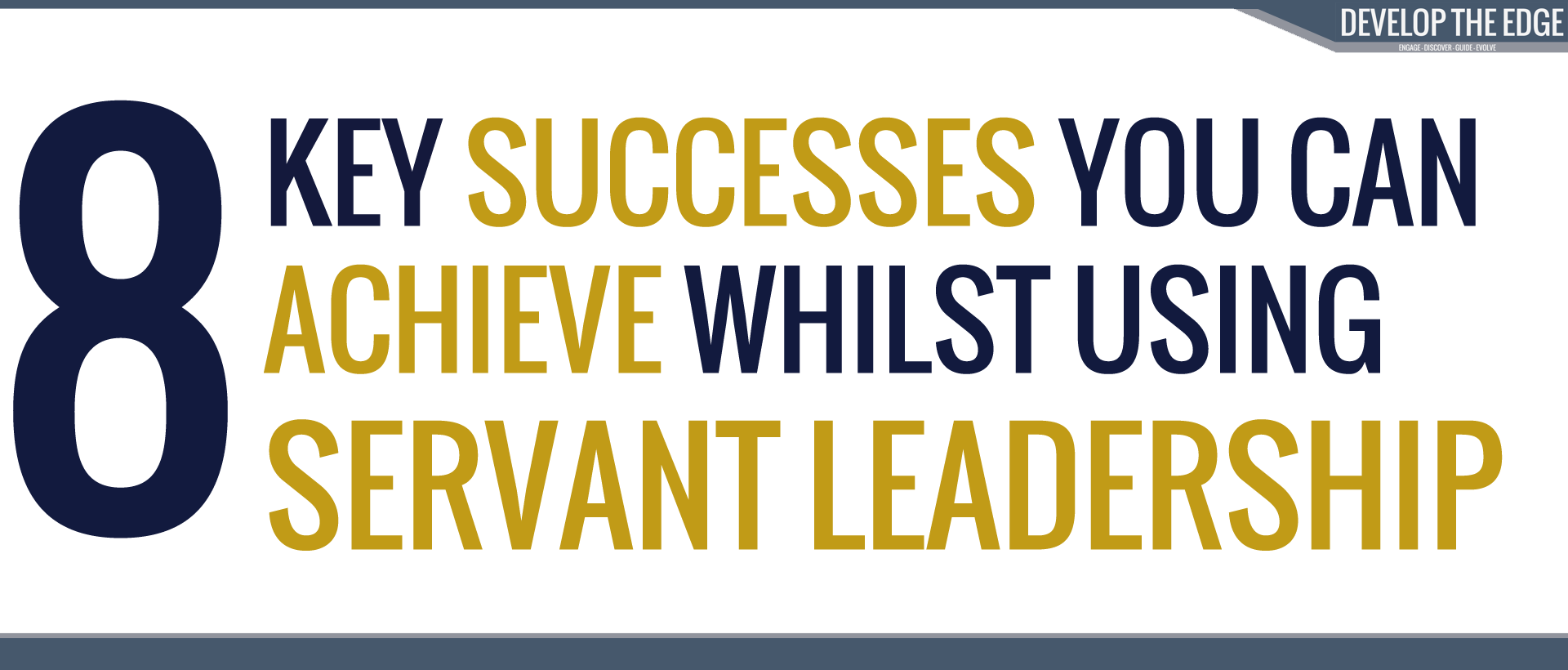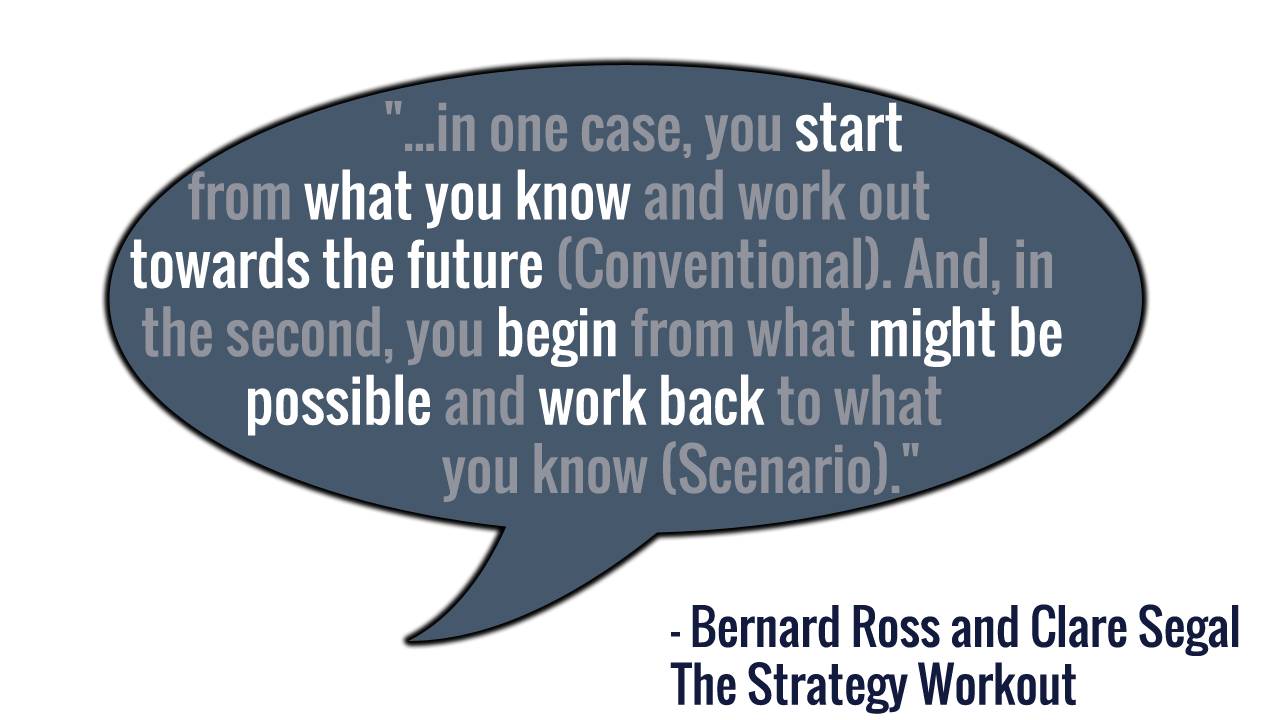In today’s world, it would appear that the Directive leader has had their day. There is much more of an emphasis on people focused leadership and making collaborative decisions. When we look into the Directive style in more detail however, there are still times where it comes out on top.
Here is our guide to Directive Leadership, when to utilise it and how to get the best out of this style.
What is Directive Leadership?
Directive Leadership has been detailed in many leadership theories from Vroom (autocratic 1&2), House (path goal theory), Tuckman (Forming stage) and many others. For this article, I will be discussing Directive Leadership from Blanchard and Herseys Situational Leadership model (they describe Directive Leadership as ‘Telling’).
This is the first of four articles where we will discover the stages of Situational Leadership (Follower Readiness levels) and their accompanying leadership styles (Telling, Selling, Participating and Delegating). Below is the full Situational Leadership model, for this article, we are only focusing on the Yellow box ‘Telling’.

Blanchard and Hersey described Directive Leadership (also known as Telling in the model) as a style where the Leader uses their skills and knowledge to provide direction, set expectations and make decisions. As you can see from the above image, this style uses a highly directive and low supportive approach to leadership, with more focus on the task than the relationship with your follower.
The model uses each Leadership style based on the Follower’s Readiness level, to understand where Directive Leadership will be most effective, we must therefore evaluate our Followers Readiness level.
Readiness level 1 (or R1) can typically be used to describe a new starter, who is in need of clear structure and direction. Consider your team, have you got any new starters that will require clear structure and direction? Have you recently up-skilled someone and now they have a low level of competence for this task? If so, you may want to read through the Do’s and Don’ts of this approach so that you get the best out of it whilst maintaining healthy relationships with people.
The Do’s
1. Do use Directive Leadership on New Starters
Think about a time where you were new to a role, you weren’t sure of your responsibilities, what processes to follow or what was expected of you. How did that make you feel?
It can be a daunting experience joining a new team, culture or position. People can feel uncertain and anxious if they do not understand their responsibilities, the business values or what they need to do to succeed. It can be a relief then, for someone to explain to you what your responsibilities are, what is expected of you and where to find the processes you need to follow.
Consider a leader using a coaching role here and trying to pull this information from you. You would likely get frustrated because you simply don’t know what you don’t know – you can’t guess a companies values, which process to follow or what your Leader expects of you – so a coaching approach in this position may damage relationships between the Leader and the Follower. The Directive approach for new starters can help relieve their anxiety of the unknown. It can give your Followers a purpose and a focus.

Business Example
In my first leadership role, I had very little experience or knowledge of leadership theories. I thought that every opportunity was a coaching session as it was all I understood about the role, developed from my time working in the fitness industry helping people with stretching goals. A new starter joined my team and I was eager to coach them to success, it was going down well with my existing team so surely it would work! Whenever I had them at my desk I would ask them what they thought they should do with A, B and C and why these tasks were important.
They didn’t know and became frustrated with my coaching approach – I was asking questions they just couldn’t answer yet. I realised that whilst it goes against my natural style, I had to be the one talking at this point. I had to tell them what they should be doing, what they were doing well, why each action of each task was important and what my expectations were of them. By doing this, their frustration turned into direction, they knew what they had to do and why they were doing it. Soon, they knew the processes and policies they needed to follow and due to becoming more confident in their role, they became open for coaching.
Key Learning
Directive Leadership can be compassionate, it can alleviate both the frustration and anxiety new starters may have about the unknown aspects of their role, allowing them to focus on the task at hand.
Once your followers are more capable and confident in their role, you can increase the level of ‘supportive’ Leadership and allow Directive Leadership to take more of a back seat.
2. Use Directive Leadership in emergencies
Your building is on fire and people are beginning to panic, some people are stood around, unsure of what to do. Time is if the essence, you have to get your people to safety. Can you imagine involving your team in decision making here by facilitating or coaching them? Not only do you risk peoples lives by not taking control, you’ll likely lose credibility here too.
Directive leadership will be needed to focus and guide the people out of danger by telling them exactly what they need to do. The focus here is high task behaviour (keeping people safe) and low relationship/supportive behaviour.
Directive leadership isnt just for life threatening emergencies but can also be used at anytime an urgent decision needs to be made and there is no time for discussion.

Business Example
In 2015, I had recently moved offices to support a team going through major role profile and wage changes, their morale was extremely low and they were clearly going through the Storming stages of Team Development.
The team were all individually very skilled and I knew they had a good work ethic. They had however, gone through multiple leadership changes, witnessed conflict amongst the leadership team and had been promised wages increases to match their role changes.
A month into the role, a senior leader called a meeting with my team. The senior leader delivered an unfavourable message about the promised wage increase and the teams frustrations boiled over, the team threatened to walk out. The senior leader, clearly disagreeing with the message they were delivering broke down in front of the team and began to cry at their reactions.
I had to act quickly to support my team and the senior leader, I needed to make urgent decisions to calm the situation, bring structure to the legitimate concerns of my team and keep my team working towards our objectives.
I thanked the senior leader for delivering the tough message in person and I adjourned the meeting. I told the team we weren’t going to get a solution today and summarised each of their concerns. I promised to look into each point and whilst I couldn’t confirm a solution today, I would keep them updated on progress.
I told the team what they would risk by walking out and asked them to take a break for the remainder of the allocated meeting time and then return to work on their projects.
As soon as the room cleared, the leader thanked me for taking control of the situation. I outlined what went wrong in the meeting and suggested a more robust preparation format for future meetings. With the urgency gone and the situation calm, I spoke with the leader about their reaction, moving to a more supportive and less directive role.
Key Learning
Directive Leadership can take control of volatile or urgent situations by setting expectations and the directing the focus on to an immediate plan of action.
Whilst I knew the team were highly skilled and capable, in this moment they were directionless and needed to see a better structure to the handling of their concerns. I set my expectations for the remainder of the day and after their break, everyone returned to work.
We had a long road ahead of us but the urgent situation had passed, Directive Leadership had allowed me to take control of the situation.
3. Use Directive Leadership for non-negotiable necessities
Directive Leadership can be used when there can be no leeway to the rules or policy. Consider workplace compliance as an example. GDPR was a big buzzword throughout 2018 with it’s new rules on data protection and harsher penalties for breaches to the rules. Those rules are specifically there to protect customers, just like health and safety rules are there to protect employees. Of course, rules can be discussed and policies can be amended but until the change takes place, the rules need to be followed correctly.

Business Example
During 2019, I was in between roles as a Learning and Development Officer and Team Leader in a collections environment. Our line of work saw us helping people in very vulnerable circumstances everyday. We did this by building trusting relationships and seeking to understand our customers situation. It was a bank holiday, so people were feeling more relaxed than usual at work and a few members of staff began making a lot of noise.
I approached these members if staff and quickly set my expectations. They were still in work, they still had a job to do and conduct deemed inappropriate on a normal working day didn’t suddenly become appropriate because it was a bank holiday. I let the team know that any further instances of conduct would result in formal disciplinary action and that should a customer overhear laughing and interpret it as mocking their situation, we could quickly lose the trust and respect of that customer, damaging our reputation and more importantly, impacting our ability to help them.
Key Learning
Directive Leadership can be used where leeway could lead to reputational damage, be a risk to quality or team productivity.
Where standards are uncompromising, a directive approach will help enforce the importance of your rules and expectations.
4. Do be human
The Directive Leadership approach has seen a lot of criticism for being archaic and focused on being managerial instead of a supportive and participative approach.
It’s important to remember that just because you are setting expectations and direction, you can still be human! Being autocratic doesn’t mean losing your manners or understanding that your team are people with their own needs. You should still explain the rationale behind your decisions and the purpose of your teams work (just not when the buildings on fire).

5. Do be reflective
The situational leadership model requires you to understand where your follower is in relation to their readiness level. Reflect on their performance and their reactions to your leadership style, is this still the best way forward?
Reflect on how your style is impacting your team. Are you getting the results you need? What could you do differently next time?

To summarise the Do’s of this model, Directive Leadership can be a great option when you are:
- Leading New Starters or people with low levels of competence.
- Leading through an urgent situation or making quick decisions
- Where rules must be followed without exception
- You remain polite and professional
- You are reflective and utilise it with a purpose
The Dont’s of Directive Leadership
1. Don’t disregard diversity!
Situational leadership was developed with the purpose of flexible leadership in mind, to be able to understand your Followers readiness level and utilise the most effective Leadership style for that situation.
Think about how you would feel if you were considered a subject matter expert in your chosen field but despite your blatant skill and commitment, your Leader constantly told you what to do and how to do it.
You would probably feel frustrated, micro-managed and incompetent, starting a vicious cycle of losing confidence, engagement and producing poor work. These frustrations will likely lead to stress and having a defensive mentality about your work. The lack of freedom to showcase your skill sets will likely leave you bored and looking for a new job.
 Business example
Business example
I was in a meeting with colleagues and there was some tension between one of the senior leaders on the call and another member of the project. I knew both people well and they were both highly skilled in their roles but they had contrasting personalities and would often clash at misunderstandings.
The senior leader began discussing some of the work my colleague had done and took the directive approach, advising what they wanted changing and how my colleague should proceed. There had already been tension based on the directive leadership approach and my colleague reacted in a very defensive manner.
The situation quickly escalated and I knew I needed to step in. I reframed the senior leaders comments, taking the focus away from the work itself and reinforced the common ground that we all wanted to build a successful project in order to meet our objectives. I began asking questions around the completed work and whether there could be a more effective way to meet the objective. The tension settled and we worked towards getting the right outcome for the project.
Later that day, the senior leader spoke to me about the situation, thanking me for the intervention and asking what the other persons problem was. Conscious that this leader likely knows more theories than I do and had more experience than me as well, I knew telling them their approach could have been better wasn’t going to get us any long lasting results. I explained that my colleague is passionate, is an expert in their field and that even with the best intentions, telling them what to do rarely goes down well. Despite it being from the right place, my colleague understood the criticism as an attack on their work instead of an attempt to deliver the best product possible.
I then asked how the senior leader would typically deal with this kind of scenario as I work closely with this person and could do with a few tactics to maintain relationships whilst making suggestions for improvements. The leader thought for a minute and suggested a supportive/facilitating style so the colleague could come up with a better way themselves.
Without realising it, the senior leader had just been coached on how best to interact with my colleague in future meetings and their change in Leadership style went over a lot better than their previous one.
Key Learning
Directive leadership has its place, using this leadership style in the wrong situation could have disastrous implications for your followers morale, mindset and your relationship with them. Where your team have the skill set, trust and support them to deliver.
2. Don’t dictate, collaborate
There are times where a follower, despite low competence may have a great idea. Disregarding this idea may damage their confidence, morale and trust in you as well as depriving the business a great new solution. There is something we can learn from everyone, so don’t close yourself off from new ideas just because someone is new to the role.
Whilst it’s true, the purpose of Directive leadership is to tell people what to do based on their competency, you can actually create problems by being too directive! The below example demonstrates this.
Business Example
Deadlines were tight, we had targets that needed to be met, audits that needed competing and feedback needed to be provided to front line staff. We were drowning.
In our weekly planning meeting we focused on key time-stealers and tactics to deal with them so we could prioritise our time and maximise our efficiency. We all agreed, the number one cause of lost time for us was the front line agents asking us questions, seemingly on every call, in every situation. We were failing as leaders. With the agreement of the leadership team in the room, we decided to turn this around. We would take shifts as ‘blockers’, the blocker would literally intercept agents coming to other members of the leadership team whilst they were working on their prioritised tasks.
The real success was in the time the blockers invested with the staff however. We realised that by telling people what to do, we had removed their autonomy. They hadn’t developed the confidence to make their own decisions or find the right process to follow. The blockers real job was in refusing to give answers, they simply asked the staff what the process said or coached the staff on what they thought they should do based on the right outcome.
The time invested here, saved us time in the long run as we began to build a more confident and autonomous team. The amount of queries slowed down over the next few weeks and over the following months, despite other time constraints, we achieved our targets and actually managed to utilise spare time to help other departments hit their objectives as well.
Key Learning
Be mindful on how your approach is impacting your followers, by telling our new starters what to do in every situation, we didn’t allow them to build up any confidence in how to problem solve by themselves or bring their own creativity to the role.
By collaborating with them and boosting their confidence, we were able to build a stronger workforce that, despite their limited time in role started to find their own solutions. We would still guide them towards the right process, we just stopped spoon feeding them every step of it.
3. Don’t dismiss development
One of the key disadvantages of Directive leadership is that it rarely allows for the development of your followers. The Leaders time is spent telling people what to do, not providing coaching feedback to see them improve.
Whilst it’s great in the short-term, which is better for your time in the long-term? Having a follower that you have to direct for each change to their task and role or having a follower that you can delegate work to and trust it can be completed to a high standard?
The Directive leader relies on their experience being greater than their followers. This means that if you don’t develop your people, the success of your organisation relies solely on your ability to follow market trends and maintain industry standards. Where you do not you are putting your organisation at risk.
By developing your people, you have a better chance of retaining this employee, saving your company money on recruitment and training costs. You can also help create and enable your Follower to be an innovator and encourage them to progress. I don’t know about you but my personal belief is that a Leaders job is to create more Leaders, not to have subservient Followers.

To summarise the don’ts of this model, Directive Leadership can be a great option when you are:
- Don’t disregard diversity
- Don’t always dictate – collaborate
- Don’t dismiss development
With the Do’s and Dont’s covered, it’s time to look at the Dichotomy of Directive Leadership:
The Dichotomy of Directive Leadership
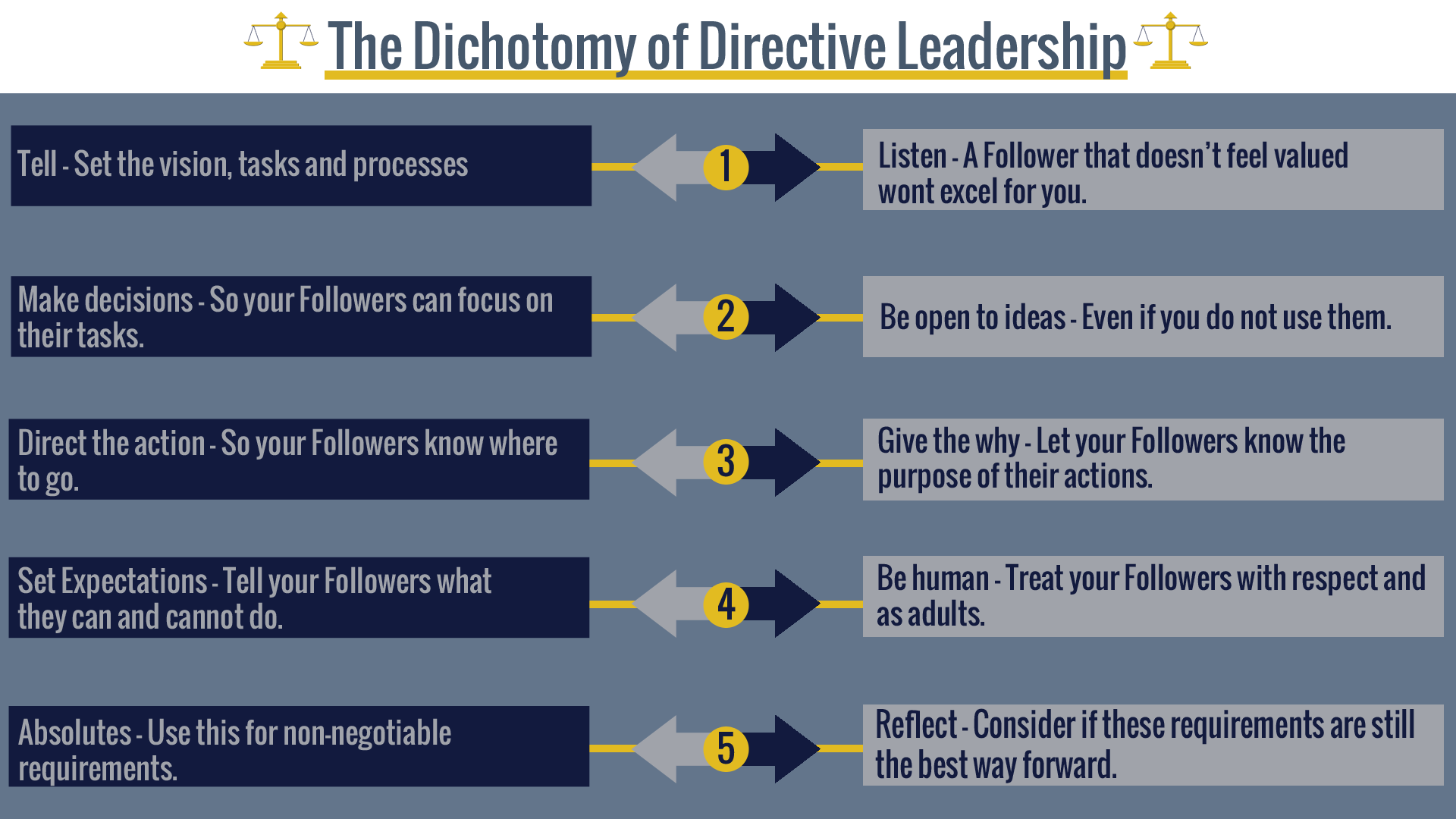
Summary
Directive Leadership is a fantastic tool and is best utilised as part of a varied skill set, inline with the other leadership styles outlined in Situational Leadership.
The best situations to use this style are
- Leading New Starters or people with low levels of competence.
- Leading through an urgent situation or making quick decisions
- Where rules must be followed without exception
Key points to remember about Directive Leadership:
- You should remain polite and professional
- You should be reflective and utilise it with a purpose
Remember that using Directive Leadership for every situation is unlikely to yield you with the best results or the most effective team. Whilst it is a great tool to use in certain situations, it can leave your team feeling like they are not trusted, valued or competent in their role and may create barrier for you to be an effective leader.
Thank you for using your time and our resources to further your understanding and skill set. If you have any feedback, queries or requests please get in touch with us at:
CONNECT@developtheedge.com
We have created the below resources for you to utilise. Click each image to preview the content and download it to your device:
One page guide – Directive Leadership
One page guide – Situational Leadership
Course – Directive Leadership
Video – Directive Leadership
Reflection template – Directive Leadership in practice
Quiz – Directive Leadership





